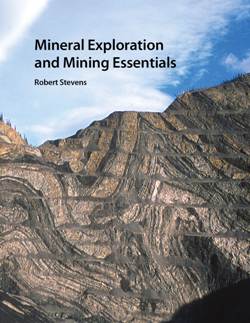Clean Energy, Climate and Carbon
Geoscientist 22.08 September 2012

Peter Cook aims at the general reader as he explains why carbon capture and storage (CCS) is an essential part of the transition we must now make towards a low-carbon economy. He hits the target with clear text and fine coloured illustrations, quite decently proof-read (although that’s ‘Socolow’ in Figures 5.7 and 5.8!). Cook tells us that his initial intention was to focus entirely on one technology, CCS. Then he decided that CCS needed to be put into context.
Our journey begins steadily, as this framework is set in the early chapters. We start with carbon dioxide and climate change. (Here more could have been made of the evidence from the geological record: you might consider taking the GSL 2010 statement out of your rucksack at this point.) Cook then reviews clearly our dumping of carbon dioxide into the atmosphere, the technological options for decreasing those emissions, and the mix of technologies required to achieve that reduction.
Cook has warned us that his “largely impersonal approach” will begin to break down in his final chapter: there are signs of things to come when the price of carbon erupts into a sober early discussion of the use of fossil fuels. The duty of setting the context has been honourably discharged by the end of Chapter 5. We now get stuck into CCS itself, nicely done in separate chapters on capture, transport and storage. Our journey picks up speed as we head towards the promised unleashing of Cook’s unbridled opinions on the risks, costs and politics of CCS. Good punches landed include: “There are no technology ‘show stoppers’ for CCS” and “There needs to be a clear and strong policy directly linking a carbon price to clean energy development, otherwise there is no real carbon policy, just another speculative market.”
I was fortunate enough to see at first hand something of the pioneering work on CCS that took place in BGS during Cook’s Directorship in the 1990s, at a time when my academic and industry colleagues were showing little interest in the subject. Since then Professor Cook has led the Otway Project in Australia, an important step forward in developing CCS. These two notable achievements underpin the authority with which he speaks to us in this welcome book.
Reviewed by Bryan Lovell
CLEAN ENERGY, CLIMATE AND CARBON
PETER COOK. Published by CSIRO Publishing 2011. Pbk. ISBN: 9780643094857 232pp List Price: AU$ 39.95. www.publish.csiro.au/pid/6467.htm
Mineral Exploration and Mining Essentials

The mining business is extremely complex and involves a wide variety of geological professionals working alongside others with technical skills. An overview of the industry, explaining concepts and bringing an appreciation of how its various parts link up, has long been needed.
This book has the wide-ranging ambition to fill this gap, and it does it admirably. Developed from course materials developed by the author to inform the business and investment sector, it should find a wider audience among the general public, where there is little understanding of the need for resources and what their development entails. It should also prove invaluable for students contemplating a career in the minerals industry, who may have studied the occurrence and formation of mineral deposits and exploration techniques, but perhaps not the rationale behind mining as a business, and its wider context.
The structure of the book is well thought-out, nine chapters following the ‘Mining Life Sequence’, following Exploration through Mining to Closure and Reclamation. Readers with a special expertise in any field may well find that to them the corresponding chapter lacks ‘full technical coverage’; but this is to be expected and does not detract from the book.
The introductory chapter is followed by one on basic geology. Following this the Mineral Deposits chapter introduces 10 major types of ore deposit, covering precious and base metals, diamonds and uranium. Particularly useful here is the information on the distribution, range of size, shape, grade and tonnage, and mining techniques for each type. The next chapter, on Exploration Techniques, introduces aspects of economics, as well as a clear description of the main techniques. The concepts of Reserves and Resources are clearly explained in the next chapter and here also is a very good explanation as to how decisions are made over the uncertainty of size and grade of a deposit and the probability of success (becoming a mine). The environmental impact of mining, sustainability and reclamation of sites are explained in the penultimate chapter. The final chapter provides suggested questions to ask when evaluating companies, together with a discussion on how to interpret company press releases.
This is a well written and illustrated overview of the mining business. A particular strength lies in linking financial, technical and environmental aspects, giving the reader a clear picture of how and why things are done the way they are. Anyone reading it will have gained a very good introduction to the business and will be able to enter into informed debate on aspects of an industry which underpins our everyday life.
Reviewed by Bill Gaskarth
MINERAL EXPLORATION AND MINING ESSENTIALS
ROBERT STEVENS
Published by: Pakawau GeoManagement Inc., 2010 ISBN 978-0-9867221-0-3 (pbk) 322pp.
www.miningessentials.com
List price CA$99.95